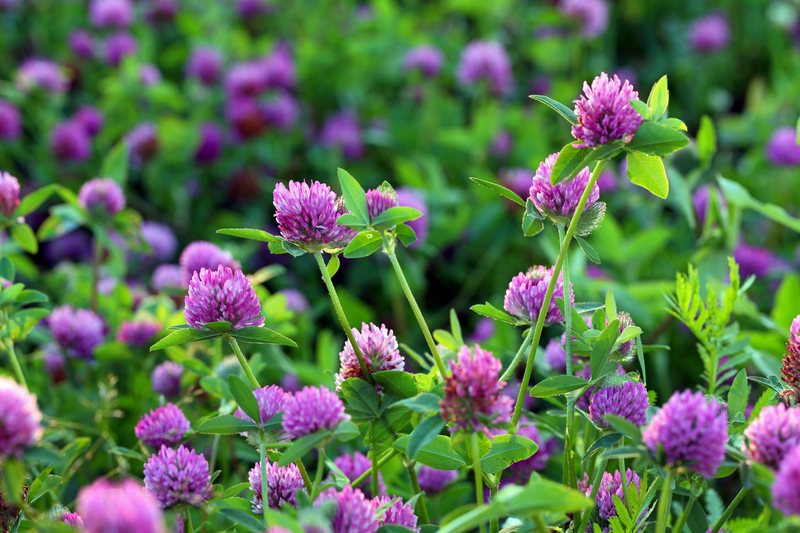Optimizing Garden Health in Windy Areas
Posted on 15/06/2025
Optimizing Garden Health in Windy Areas: A Comprehensive Guide
Gardening in windy regions can be a challenging, yet highly rewarding experience. Wind can stress plants, dry out the soil, reduce yields, and even cause structural damage to your garden. However, with thoughtful planning and smart strategies, it's entirely possible to nurture a thriving garden in windy areas. This article delves deep into effective methods for optimizing garden health in windy environments, providing you with actionable solutions, expert advice, and ingenious ideas to help your plants flourish against the wind.

Understanding the Impact of Wind on Gardens
Before you can successfully optimize your garden's health in breezy locations, it's crucial to grasp how wind affects plants and the overall landscape. The wind doesn't just whip foliage around; it influences plant health in several key ways:
- Desiccation: Wind increases evaporation, drying out soil and plant tissues, which leads to wilting and stress.
- Physical Damage: Strong gusts can break stems, strip leaves, or uproot young or shallow-rooted plants.
- Temperature Fluctuation: Wind can exacerbate temperature drops, causing chilling injury to sensitive plants.
- Pollen Distribution: While it can aid pollination for some species, excessive wind can interfere with fruit set or blow away pollen prematurely.
- Frost Risk: Moving air can bring cold spells deeper into your garden, increasing the likelihood of frost damage.
Awareness of these challenges is the first step toward cultivating a resilient and healthy garden in windy places.
Smart Planning: Designing Wind-Resistant Gardens
Garden design plays a pivotal role in minimizing wind damage. A carefully planned garden layout can create microclimates, reduce exposure, and promote vigorous growth even in the windiest areas.
Create Effective Windbreaks
Windbreaks are the cornerstone of windproof garden optimization. They act as buffers, reducing wind speed and protecting vulnerable plants. Consider the following approaches:
- Hedges and Living Screens: Dense shrubs or trees like hawthorn, privet, leylandii, or yew make excellent windbreaks. Choose species with flexible branches that bend rather than break.
- Fences and Trellises: Semi-permeable structures, such as louvered fences or trellises draped with climbing plants, diffuse wind rather than blocking it completely, which prevents turbulence on the leeward side.
- Garden Sheds or Greenhouses: Strategically place structures to shield sensitive beds or cultivated areas from prevailing winds.
Tip: Locate your primary windbreak on the side of your garden that faces the prevailing wind. Plant in staggered rows to maximize effectiveness and blend seamlessly into your landscape.
Design for Microclimates
Creating microclimates--small pockets of protected, warmer spaces--offers vulnerable plants a safe haven from fierce winds. Use the following design principles:
- Orient garden beds lengthwise relative to prevailing winds to minimize exposure.
- Utilize walls or existing hedges as natural shields.
- Group taller, hardier plants as a protective barrier around more delicate species.
This layered approach not only enhances garden health in wind-exposed locations but also adds ornamental value and biodiversity to your space.
Choosing the Right Plants for Windy Gardens
Plant selection is vital in optimizing garden health in windy settings. Certain species adapt better to constant breezes and are less prone to damage. Here are some top choices and tips:
Best Plants for Windy Areas
- Ornamental Grasses: Varieties such as Miscanthus, Stipa, and Calamagrostis provide movement, sound, and resilience.
- Drought-Tolerant Shrubs: Lavender, rosemary, escallonia, and euonymus withstand wind and conserve water.
- Low-Growing Perennials: Thyme, creeping phlox, and heuchera hug the ground, avoiding wind damage.
- Rugged Trees: Consider rowan, hawthorn, mountain ash, or pine for wind-tolerant arboreal screening.
- Native Wildflowers: Local species often have inherent adaptations to regional climates, including wind resistance.
Tips for Planting in Windy Locations
- Plant densely: Closer plant spacing protects root zones, minimizes soil erosion, and creates a mutually protective ecosystem.
- Prioritize ground cover: Ground covers are vital for reducing moisture loss and preventing dust and soil from blowing away.
- Opt for flexible species: Select plants with supple stems and small, narrow leaves, less likely to tear or snap.
- Plant in stages: Start with a hardy outer layer and gradually introduce more sensitive species once there's adequate shelter.
By investing in the right plant choices, you're reinforcing your garden with a natural layer of wind resistance that supports healthy growth year-round.
Soil Management for Wind-Exposed Gardens
Windy conditions frequently lead to rapid soil drying and increased erosion. For a vibrant, productive garden, opt for soil management practices that lock in moisture and prevent nutrient loss.
Mulching: The First Line of Defense
- Organic mulches, such as shredded bark, compost, or straw, insulate soil, conserve water, and suppress weeds.
- Inorganic options, like gravel or landscape fabric, may be preferable in high-wind scenarios, as lighter mulches can blow away unless secured.
- Reapply mulch regularly, as wind can displace even heavy materials over time.
Enhance Soil Structure
Well-structured soil resists erosion and holds moisture more efficiently. To optimize soil in windy gardens:
- Add generous amounts of **organic matter**, such as compost or well-rotted manure, annually.
- Encourage earthworm activity, which improves aeration and water retention.
- Minimize bare ground--keep beds planted year-round or cover fallow areas with green manure crops.
- Consider windbreak hedges with deep root systems to further anchor soil in place.
Irrigation Strategies for Windy Conditions
- Water deeply and less frequently to promote deep root growth, improving drought and wind resilience.
- Time irrigations for early morning or late afternoon, when evaporation rates are lowest.
- Install soaker hoses or drip lines beneath mulch layers for efficient, direct hydration.
By adopting proactive soil and watering practices, you ensure that your garden retains essential moisture and nutrients despite the wind's drying effect.
Maintenance Tips to Strengthen Your Garden Against Wind
Even after careful planning and planting, ongoing maintenance is crucial to sustaining a healthy garden in windy places. Here are actionable tips:
Staking and Support
- Stake young trees and tall perennials securely, but allow for some movement to encourage stronger root growth.
- Use soft ties or wide straps to avoid damaging stems.
- Check and adjust supports seasonally as plants grow.
Regular Pruning
- Clip back dead or weak growth to reduce wind resistance.
- Thin out dense crowns and remove damaged limbs to prevent breakage.
Monitor for Pests and Disease
Wind-injured plants are more susceptible to infestations and infections. Inspect your garden regularly, removing damaged foliage and treating problems promptly.
Install Temporary Barriers During Extreme Weather
- Erect burlap screens or portable fencing around newly planted beds.
- Protect sensitive seedlings or transplants with cloches or row covers until established.
Routine, attentive care is the linchpin of ongoing garden health in breezy conditions.
Creative Solutions for Beautiful Wind-Resistant Gardens
While utility is paramount, a wind-proofed garden can still be a thing of beauty. Here's how to combine function with form:
- Incorporate moving sculptures or kinetic art that dance gracefully in gusts, creating a dynamic focal point.
- Use wind chimes or musical elements for soothing soundscapes.
- Choose plants with interesting movement, such as grasses or willow, that sway rather than snap.
- Design winding pathways and secluded seating nooks shielded by your windbreaks for year-round enjoyment.

Common Mistakes to Avoid in Windy Gardens
To summarize, avoid these frequent pitfalls when optimizing garden health in windy climates:
- Using solid, impermeable screens that funnel and intensify wind around their edges.
- Planting all species at once rather than establishing wind-tolerant shelter first.
- Neglecting soil preparation, resulting in poor moisture retention or erosion.
- Failing to maintain supports and barriers seasonally.
- Overwatering--wind dries the surface, but roots may be well hydrated below; always check soil moisture before irrigating.
Conclusion: Flourishing Even in the Wind
Gardening in windy areas need not be a battle. By understanding wind's effects on your landscape, employing smart design and planting strategies, investing in robust soil management, and staying proactive with ongoing maintenance, you can optimize garden health in even the most breezy, exposed locales. Remember, every garden is unique--experiment, observe, and adapt as needed. In time, your carefully curated wind-resistant haven will not just survive, but thrive, offering lush beauty and bountiful harvests for years to come.
Further Reading and Resources
- Local extension services often provide wind-specific plant lists and care guides.
- Books on garden design for challenging climates can inspire fresh ideas and new approaches.
- Community gardening groups are valuable for shared experience and troubleshooting unique local issues.
Embrace the wind--with the right know-how, your garden will become a testament to resilience and natural beauty.

